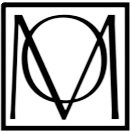About the Exhibit
Thanks to a long-standing partnership, The Peterborough Museum and Archives temporary gallery was transformed by up-and-coming museum professionals. The student-led exhibit explored how communication has shaped Peterborough and the surrounding region, highlighting the many ways people connect with one another and the wider world. This project was a practical application of the skills and knowledge students gained throughout their studies, including photography, graphic design, text writing, artifact handling, mount-making, and exhibit design.
For accessibility, a classmate, Helen Lister, and I created an online exhibit for people to access.
My Contributions
Helped to select and organize the objects and archival material for the exhibit.
What I learned…
When selecting objects for the exhibit, each item must align with the exhibition theme and contribute meaningfully to the narrative. Objects should be relevant to the story, with clear provenance and ethical acquisition. Research is often necessary to verify the object’s history’s accuracy and address any uncertainties. The object's condition is crucial; fragile items may require conservation or a replica, and their ability to withstand exhibition conditions—such as light, temperature, and handling—must be considered. Logistical factors, including size, weight, and transportation, also play a role in determining whether an object is suitable for display. Additionally, curators should ensure proper housing and installation materials are available. The object’s visual appeal and significance should be evaluated for its potential to engage visitors and support marketing efforts. Finally, comprehensive documentation, including photographic records and updates to collections databases, is essential to maintain institutional records and ensure proper stewardship of the items.
Media Team
Cleaning and prepping the typewriter for display.
promoted the exhibit and the student’s work throughout the winter semester using both Instagram and Facebook
Skills Gained…
Engagement-based content: Create content that encourages your audience to interact with your posts, such as polls and tagged community partners.
Posting schedule: Create a regular posting schedule to drive user engagement.
Responding to comments: Respond to comments and criticisms in a timely manner.
Analytics: Use social media analytics tools to track your strategy.
Digital media: Have a strong working knowledge of digital media. Creating content using adobe and canva weather it was a photo or reel.
Communication: Be able to communicate effectively with classmates and community members, whether digitally or traditionally
Understanding of how a museum works: Have a good understanding of how a museum operates through social media avenues.
Social Media Team
I was deeply involved with the plinth-making team during the fabrication process. We received measurements from the design team and were responsible for measuring, cutting, sanding, and assembling all the plinths for the exhibit. Our focus was on selecting the appropriate materials, considering what would cover the plinths, and ensuring they were safe for the artifacts. We also took into account the plinths' size, display height, and stability, particularly for heavier objects.
Once the plinths were built, we caulked, primed, and painted them black to match the exhibit's visual aesthetic and help the objects stand out.
For the installation, my team and I laid out the exhibit using painter's tape to verify that the 3D models and Google SketchUp designs could be accurately replicated in the physical space. This included mapping out the floor plan and positioning the exhibit text on the walls. Once the layout was finalized, we measured, levelled, and attached the exhibit text and images. Then, we brought in the larger furniture pieces. The plinths that hadn't been painted were draped in black fabric and pinned in place. Finally, I helped clue and cut out the text for the Morse code interactive.
In my role with the media team, I ensured that each object was securely positioned and handled with care.
Ultimately, it was a true team effort—everything came together because of the collaboration and attention to detail from everyone involved. Teamwork really does make the dream work!
Fabrication & Installation
Project Highlight - The Top Hat
One of the key responsibilities when working with the media team was ensuring that everyone in the class had the materials, they needed to complete their tasks. My assignment was the beaver fur top hat. The main objectives were to create a detailed condition report for the object. This involved ensuring the proper catalog number, documenting the object's provenance and history (which could potentially be used in the exhibit), assessing its care requirements, and taking detailed photographs.
We were then tasked with designing and executing an exhibit display, making sure the object was both stable and aesthetically presented. To secure the top hat, I tested my sewing skills by creating a padded donut to attach to the base. I used double-sided tape and mylar to prevent any slippage.
Once the exhibit was set up, we ensured that the PMA was left with a comprehensive preservation and conservation plan for each object, including considerations for light, temperature, and relative humidity (RH).
Below are some clickable documents and images of the process from start to finish.
For a little fun, Taher Hussain has created a video to introduce the group and the exhibit. I hope you enjoy it as much as we did!








































